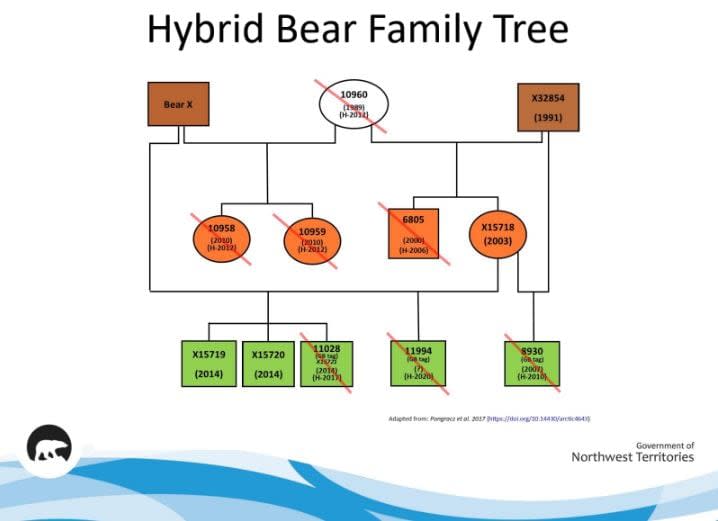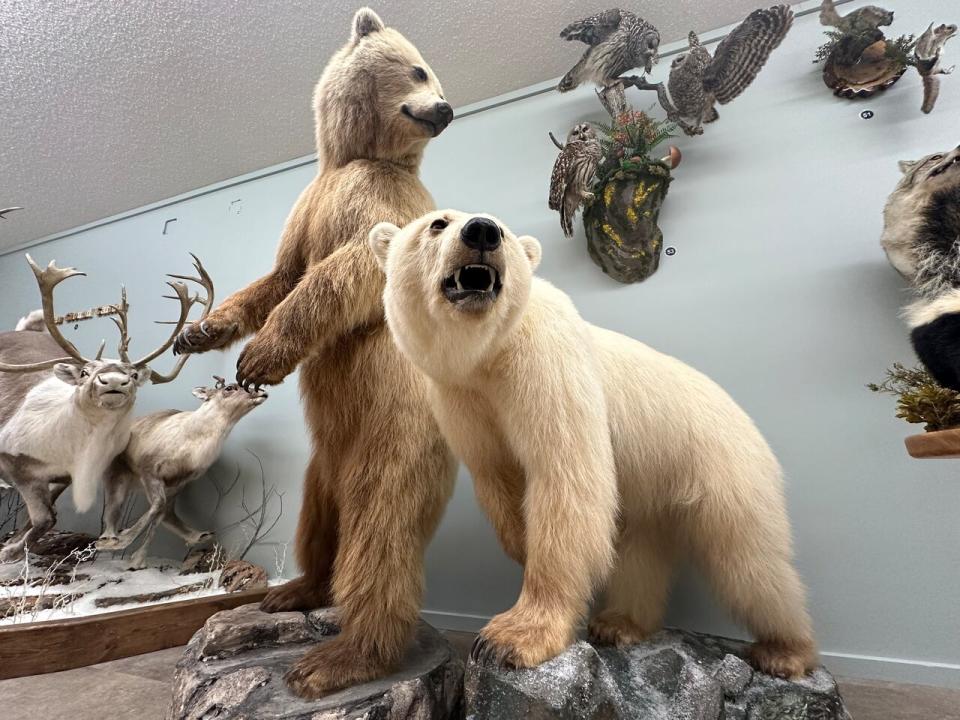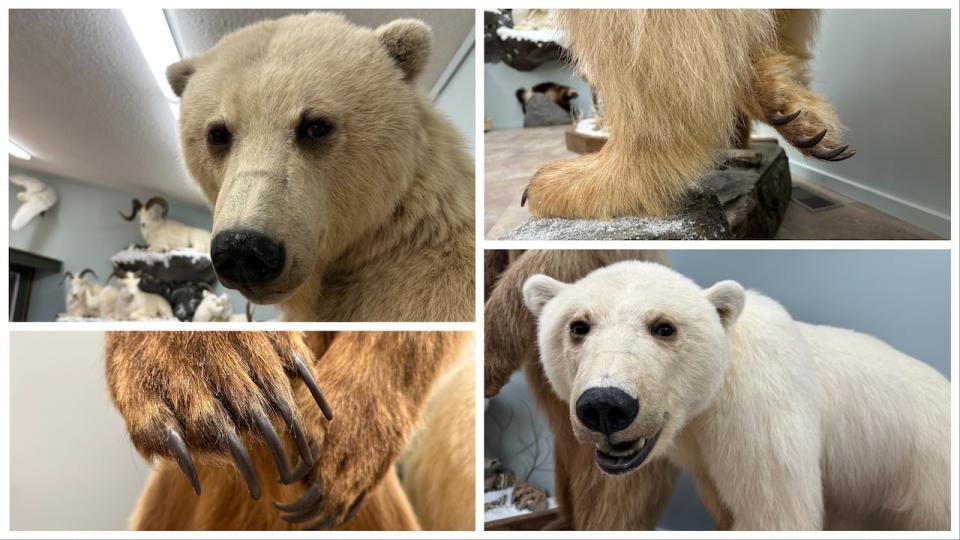Grolar bear hybrids in N.W.T. all traced back to same 'strange' female polar bear
A family of polar and grizzly bear hybrids, or grolars, in Canada's western Arctic — which all started with a "pretty strange" female polar bear — is "quite rare," according to a new study.
The research paper, published last week in the journal Conservation Genetics Resources, used a new tool to look at samples from 371 polar bears and 440 grizzly bears across Canada, Alaska and Greenland. The samples had been collected between 1975 and 2015.
Ruth Rivkin, a postdoctoral research fellow at the University of Manitoba and one of the study's authors, expected to find more "hidden hybrid" bears in the data — creatures that may have looked like grizzly bears but did, in fact, have polar bear in their lineage. But the new tool, a genetic sequencing chip, showed only eight hybrid bears in the Northwest Territories that scientists had already found to be part of the same family.
Rivkin said it's a sign hybridization is "quite rare." But, she expects it'll happen more often in the future.
"It's really important that we keep monitoring these polar bears so that we can see if hybridization begins to ramp up," she said. The western Arctic is one place where that's more likely to happen, she said, because it's one of the few areas in the world where grizzly and polar bear habitats have been starting to overlap as the climate changes.
Female polar bear 'famous' for producing hybrids
A 2017 study by Jodie Pongracz, a biologist who had been working with the N.W.T.'s then-Department of Environment and Natural Resources, found eight hybrid bears in the Inuvialuit Settlement Region were part of the same family.
It all started with a female polar bear born in 1989. Though he didn't capture her himself, Evan Richardson, a polar bear research scientist with Environment and Climate Change Canada, told CBC News the bear is considered "famous" for mating with two grizzly bears on multiple occasions and producing four hybrid offspring.

One of those offspring, given the number X15718, would go on to breed with two grizzly bears just like her mom did — something scientists refer to as "backcrossing."
Steve Baryluk, a wildlife manager with the N.W.T. government who works in the Beaufort Delta, said it seemed like the family of "tightly closed" bears had a "preference for something a little different."
Rivkin suggested the initial mother may have been "pretty strange" but also pointed out that while female polar bears do have "some level of choice" about who they mate with, size makes a difference. If a male grizzly is interested in mating with a female polar bear, "that's probably what's going to happen," she said.

Richardson, who like Baryluk is a co-author of Rivkin's study, saw clues this was happening during a 2012 helicopter flight with Pongracz over the northern end of Victoria Island.
"We spotted this funny-looking bear running across the sea ice, it was being chased by a large grizzly bear. This bear ran up into the rocks, which kind of put us in a precarious place to actually capture it, so we didn't capture either of those bears."
Richardson said two years later, surveying the exact same bay, he spotted what he believed to be the same cream-coloured hybrid — X15718 — running across the ice with three chocolate-coloured cubs.
"You almost had to like rub your eyes to make sure you were seeing what you were seeing," said Richardson. "That grizzly bear probably caught up with her and bred with her, and then she subsequently had these three little cubs which were second-generation hybrids."

Richardson never saw the second-generation hybrid bears again. One of them was harvested in 2017 and is now on display at the Nature's North Wildlife Gallery in Yellowknife, next to a first-generation hybrid bear harvested in 2012.
Mostly a grizzly, but learning to be polar
Pongracz's 2017 study found X15718 mothered four hybrids that were 75-per cent grizzly and 25-per cent polar bear. Baryluk said she also mothered a fifth hybrid bear, not accounted for in Pongracz or Rivkin's studies, that had been harvested in 2020.
Richardson said the second-generation bears would have faced challenges throughout their lives, because they were genetically closer to being grizzly bears, but would have been raised as polar bears — taught by their hybrid mother, who learned polar bear behaviours from her own mother.

"Being chocolate brown and trying to sneak up on a seal on the sea ice compared to being, you know, snowy white like most polar bears, would definitely be a challenge," said Richardson. He said X15718 was captured at one point and found to have longer claws like a grizzly bear, a brownish coat colour, dark circles around her eyes and a brown stripe down her back.
Those are just the visible features researchers were able to observe. Richardson said there are also many physiological differences between the two different types of bear — grizzlies, for example, are omnivores and hibernate during the winter. Polar bears are carnivores who are active during the winter.
The recent paper shows there were only eight hybrid bears in the hundreds of samples that were tested, but the research does have limitations. For example, there might be hybrid bears that were never sampled. More may also have been born in the past nine years.
Although it used to be "fairly unusual" to see grizzly bears venture out onto the sea ice, Rivkin said communities and researchers have seen it happening more and more often.
"We think probably we'll see more hybrids down the road," she said.
Rivkin hopes the new genetic sequencing chip, which she says is relatively inexpensive, quick and accurate, will be used to test more bears for hybridization in the future.


